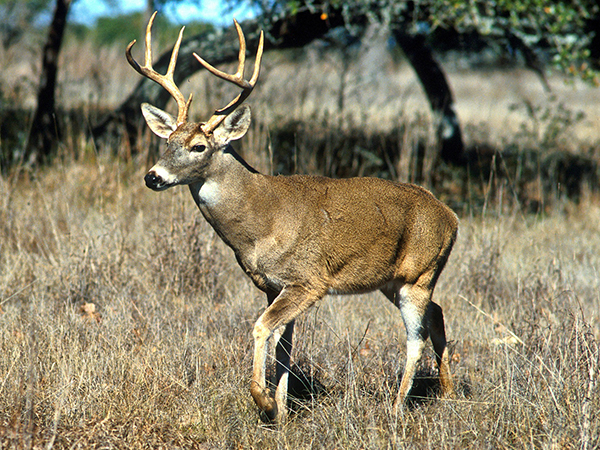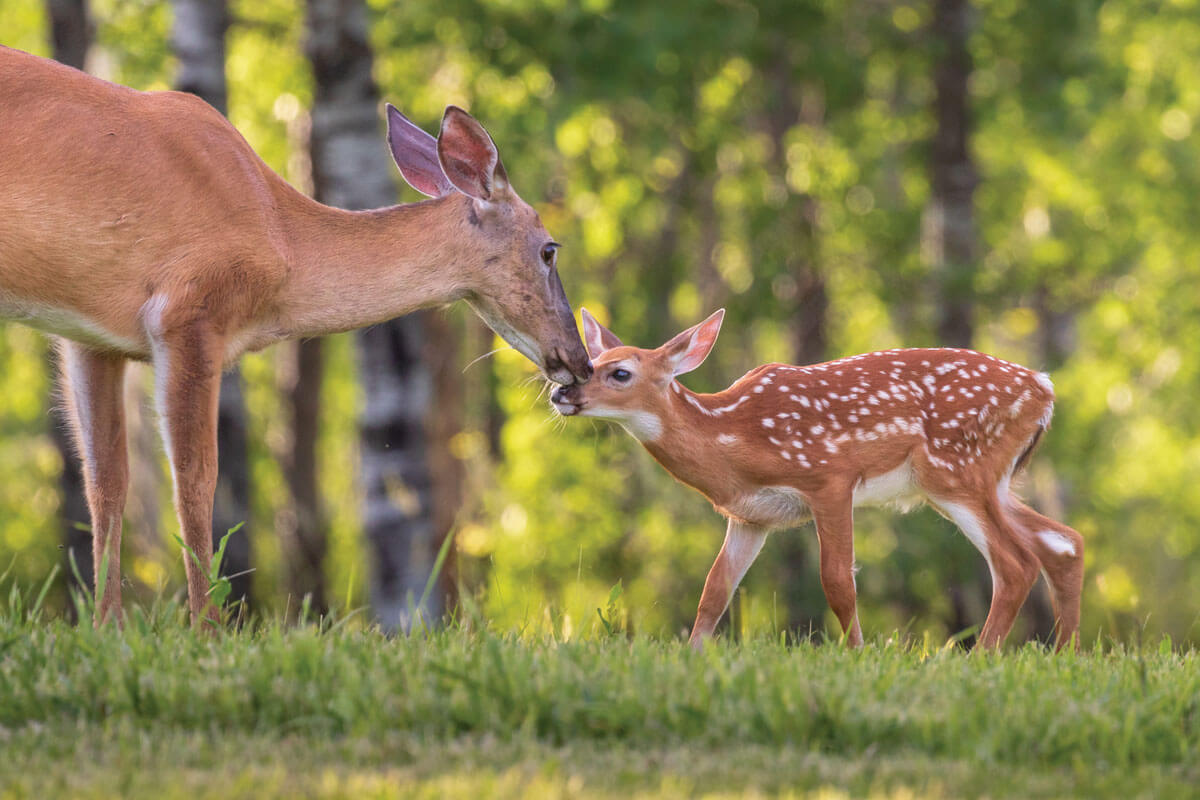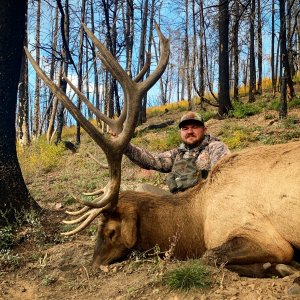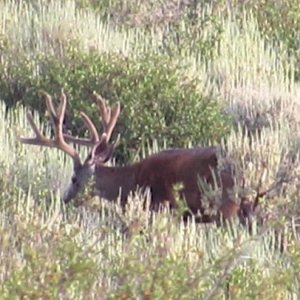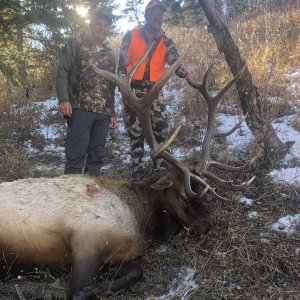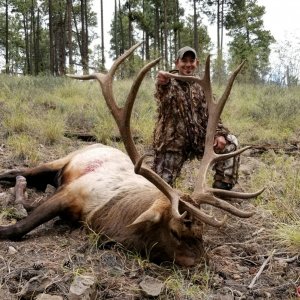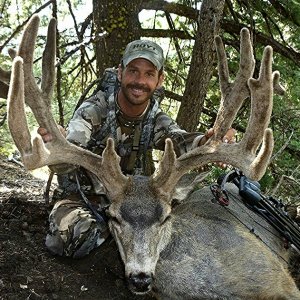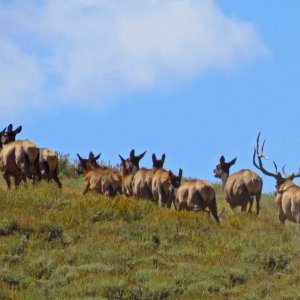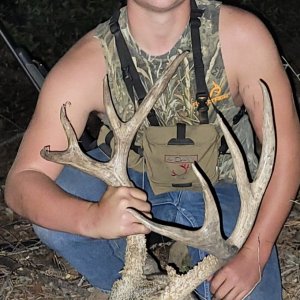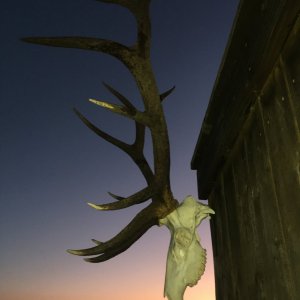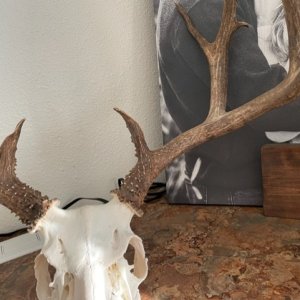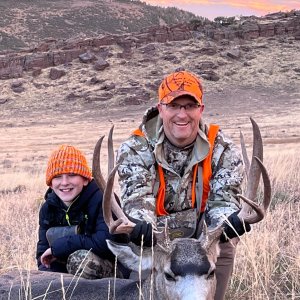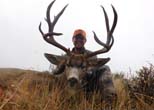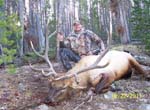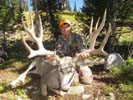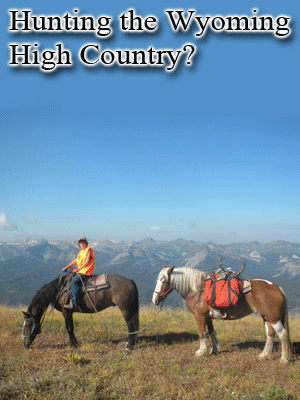nontypical
Long Time Member
- Messages
- 4,298
This is my non-professional view of the Grey's River deer herd. I took a trip Monday to see if any more deer had arrived on the winter range since the last storm. I was glad to see that more deer have shown up and seem to be occupying the usual places. Just not very many. I was concerned that in certain areas, I was not seeing deer, and was somewhat concerned that perhaps a migration route was no longer being used, because the deer that used it in the past had all died. As we all know, deer learn where to go from mom. They follow mom their first year, and that's where they go for pretty much the rest of their lives (mostly). Many of the areas that were snowed in last winter were completely devoid of deer 3 weeks ago. Those places had literally unbelievable amounts of snow last winter. I don't see how any living creature could have lived through that. Well, apparently, some did!
More good news is that there are actually fawns! Even a few twins here and there. That's one helluva tough momma to not only survive the winter, but actually give birth to fawns! Even more good news is the leader growth on the sagebrush is fantastic! On top of that, we are having a mild winter so far, and the deer are in excellent body condition.
As a result of my latest trip, I have revised my estimate on last winter's mortality to around 65-70%, which is better than my previous 75-80% guess. My formula for determining that is just a guess (educated? You be the judge!). I think about how many deer I saw today, and would twice as many be what I normally would see? No, I should be seeing at least 3 times as many. So...that's my uneducated guess.
The bad news is the buck/doe ratios are at historic lows, according to G&F's latest herd classification counts done in December (19/100). So are the fawn/doe ratios (32/100). My unofficial observations pretty much coincide with the B/D ratios, but I never counted fawns, so I can't compare, but it seems about right from what I've seen. More bad news is there are literally no yearling bucks. I've only seen a couple. So...that age class will be missing, and that will rear it's ugly head in a few years. I personally have not seen a buck that I could confidently guess is a 4+ year old this winter. I know a few are running around, I'm just not seeing them, but others are. Very few and far between. It's going to be rough for some years ahead. At least 5 years before we regain what we had before last winter is my guess. In terms of a viable mature (5+ years old) buck population, it will be at least that long. With the improved range conditions and new underpasses, overall herd growth could happen at a faster pace than normal (I hope!). Of course, another bad winter could screw that up, too. I'm very curious to see how the underpasses work out! I almost forgot to add that G&F has committed $200k for coyote control for herds that were hard-hit by last winter. That should also help herd recovery.
Okay, I'm done rambling. Here's a few pics I've taken this winter. Not sure if any are 4-yr olds, but there could be.






More good news is that there are actually fawns! Even a few twins here and there. That's one helluva tough momma to not only survive the winter, but actually give birth to fawns! Even more good news is the leader growth on the sagebrush is fantastic! On top of that, we are having a mild winter so far, and the deer are in excellent body condition.
As a result of my latest trip, I have revised my estimate on last winter's mortality to around 65-70%, which is better than my previous 75-80% guess. My formula for determining that is just a guess (educated? You be the judge!). I think about how many deer I saw today, and would twice as many be what I normally would see? No, I should be seeing at least 3 times as many. So...that's my uneducated guess.
The bad news is the buck/doe ratios are at historic lows, according to G&F's latest herd classification counts done in December (19/100). So are the fawn/doe ratios (32/100). My unofficial observations pretty much coincide with the B/D ratios, but I never counted fawns, so I can't compare, but it seems about right from what I've seen. More bad news is there are literally no yearling bucks. I've only seen a couple. So...that age class will be missing, and that will rear it's ugly head in a few years. I personally have not seen a buck that I could confidently guess is a 4+ year old this winter. I know a few are running around, I'm just not seeing them, but others are. Very few and far between. It's going to be rough for some years ahead. At least 5 years before we regain what we had before last winter is my guess. In terms of a viable mature (5+ years old) buck population, it will be at least that long. With the improved range conditions and new underpasses, overall herd growth could happen at a faster pace than normal (I hope!). Of course, another bad winter could screw that up, too. I'm very curious to see how the underpasses work out! I almost forgot to add that G&F has committed $200k for coyote control for herds that were hard-hit by last winter. That should also help herd recovery.
Okay, I'm done rambling. Here's a few pics I've taken this winter. Not sure if any are 4-yr olds, but there could be.
Last edited:

